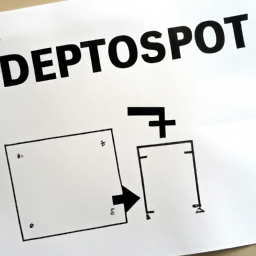
Withdrawal and Deposit Methods: A Comprehensive Guide
Introduction
When it comes to managing your finances, it is essential to have convenient and secure methods for both depositing and withdrawing funds. In this article, we will explore various withdrawal and deposit methods that are commonly used today. Whether you are an individual or a business, understanding these methods will help you make informed decisions and streamline your financial transactions.
Withdrawal Methods
Bank Transfers
One of the most traditional and widely used withdrawal methods is bank transfers. This method involves electronically transferring funds from your bank account to another account. Bank transfers can be done online, through mobile banking apps, or by visiting a bank branch. It is a secure and reliable method, but it may take a few business days for the funds to be available in the recipient’s account.
ATM Withdrawals
ATM withdrawals are a convenient way to access cash from your bank account. ATMs are available at various locations, allowing you to withdraw money at any time. Simply insert your debit or ATM card, enter your PIN, and select the desired amount to withdraw. However, keep in mind that ATM withdrawals may be subject to daily withdrawal limits and transaction fees.
Online Payment Platforms
With the rise of e-commerce and online transactions, online payment platforms have become increasingly popular for withdrawals. Platforms such as PayPal, Skrill, and Payoneer allow you to link your bank account or credit card and transfer funds securely. These platforms often offer additional features such as buyer protection and international transfers, making them a versatile choice for individuals and businesses alike.
Deposit Methods
Bank Transfers
Similar to withdrawal methods, bank transfers are also commonly used for making deposits. By providing your bank account details, you can transfer funds from another account to your own. This method is ideal for larger transactions and is often used for salary deposits, bill payments, and business transactions.
Debit and Credit Cards
Debit and credit cards are widely accepted and convenient deposit methods. By using your card, you can make purchases online or in-person, and the funds are immediately deducted from your account or added as a credit. Many businesses and online platforms support card payments, making it a versatile option for deposits.
Mobile Payment Apps
Mobile payment apps, such as Apple Pay, Google Pay, and Samsung Pay, have gained popularity in recent years. These apps allow you to link your debit or credit card and make payments using your smartphone or smartwatch. By simply tapping your device on a contactless payment terminal, you can securely deposit funds without the need for physical cards.
Cryptocurrencies
With the advent of blockchain technology, cryptocurrencies like Bitcoin, Ethereum, and Litecoin have emerged as alternative deposit methods. These digital currencies offer decentralized and secure transactions, allowing individuals and businesses to send and receive funds globally. However, it is important to note that cryptocurrencies can be volatile, and their acceptance as a deposit method may vary.
Conclusion
Having a variety of withdrawal and deposit methods at your disposal is crucial for managing your finances efficiently. Whether you prefer traditional methods like bank transfers and ATM withdrawals, or opt for more modern options like online payment platforms and mobile payment apps, understanding the pros and cons of each method will help you make informed decisions. Consider your specific needs, security concerns, and convenience factors when choosing the most suitable withdrawal and deposit methods for your financial transactions.